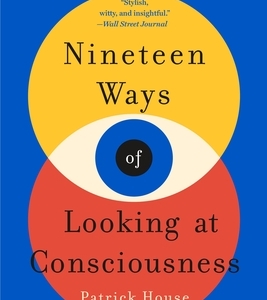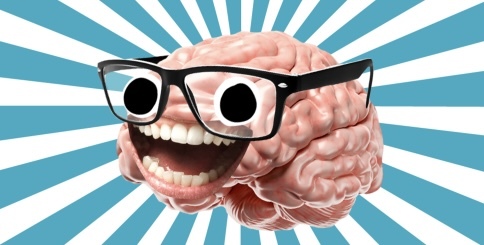Nineteen Ways of Looking at Consciousness by Patrick House
My rating: 2 of 5 stars
“The brain is messy and venous and dense and soaking wet, all the time, and is about as heavy as a hardback copy of Infinite Jest. It is not designed, perfected, or neat. It is a thrift-store bin of evolutionary hacks Russian-dolled into a watery, salty piñata we call a head.”
How does this messy wet tissue blob full of electrical connections and countless not-quite-understood connections and pathways translate into something that’s an “I”, something that is aware of its “I”-ness and the world around it? How that happens is a mystery that remains yet unsolved and yet the most existential of anything that weird tissue blob can imagine.
In this book the framework is the laughter of a girl undergoing brain surgery for epilepsy, laughter provoked by electrical stimulation of a part of her brain, laughter that she in that moment justified by finding various reasons that were anything but an electrode in the brain during a surgery. It’s a surreal situation, and one to make such impression on the author of the book that he built an entire exploration of the framework behind consciousness around it.
And yet I just don’t quite know what happened when I read it. The science is good, the writing is good, the subject fascinating (and I have the necessary neurobiology background for it to make great sense — and yet my eyes kept bouncing off the page and that pesky blob of neural tissue and electrical connections that I call my brain (the brain that manages to survive books on particle physics almost unscathed although blessed with deep lack of understanding and even managed to find its way through the tangles of dense science fiction on consciousness without shorting out) kept zoning out into the odd trance where I would go back to the chapter unsure if I just had read it, with only some interesting passages reminding me that yet, I indeed have. I tried restarting it a few times, rereading a few chapters to make sure it wasn’t the lack of attention, taking days-long pauses, and yet it never came into any sort of even sharp-ish focus, even as I finished at least five other books alongside it.
And I still don’t know why. Maybe I have a rogue brain electrode making my brain fuzz out. Maybe it’s because I tend to lean more towards science in books like these and this went deeper into tangential and messily poetic philosophy than my not-too-cultured self is suited for (I audited a philosophy class on the mind in college and lost my patience after a couple of lectures and joined a biochem study group instead). My inner stream of consciousness must take a different neuronal pathway here.
But the chapter titles were absolutely great. “The Median Price of a Thrift-Store Bin of Evolutionary Hacks Russian-Dolled into a Watery, Salty Piñata We Call a Head”; “A Sex-Starved Cricket Sculpting in Time”; “Swinging Through Ancient Trees While Standing Still and Hearing Voices” — all these are worth a full star each.
Oh, and there was a chapter on pinball that I found absolutely fascinating. (Confession time: I’ve never played a game of pinball in my entire life, but now I’m full of trivia about it).
But just because I am not a perfect reader for this book doesn’t mean others won’t be. Just go and read my friend Justin’s wonderful review of it to see how a differently wired brain experiences the beauty that I can see here but just fail to fully appreciate.
2.5 stars. (Sorry, Justin, it’s not the book, it’s me).



